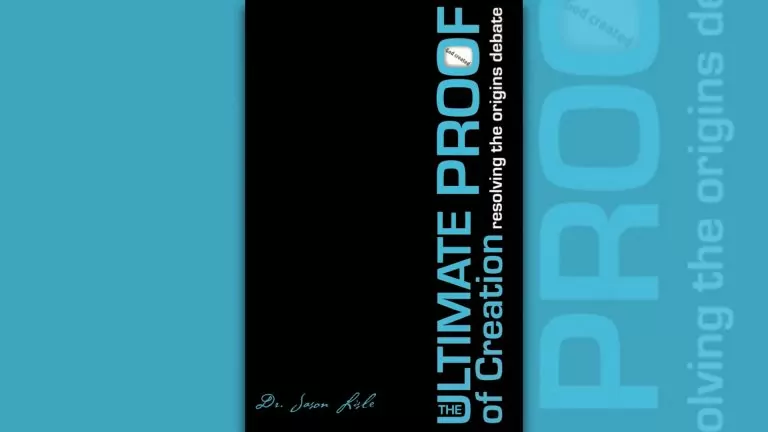by Jason Lisle
2009 / 254 pages
Herman Bavinck (1854-1921) is an important figure from our Reformed heritage. A careful theologian with a love for the Word of God, Bavinck is just beginning to be truly appreciated in North America through the translation of his four-volume Reformed Dogmatics. Even though he isn’t mentioned in it, The Ultimate Proof of Creation owes a debt of gratitude to this giant.
From Bavinck to Van Til to Bahnsen to Lisle
How so?
Well, back in the 1920s, a young student at Calvin Seminary in Grand Rapids became enamoured with Bavinck. Reading him in the original Dutch, this student caught on quickly to Bavinck’s perspective. In later years, this student would go on to apply Bavinck’s insights to the field of apologetics. Cornelius Van Til (1895-1987) never claimed to be original and never claimed to be doing anything other than standing on the shoulders of the giants who went before him. While at Westminster Theological Seminary, Van Til would teach several generations of Presbyterian and Reformed men how Reformed theology demands a Reformed apologetic and he would offer that apologetic mostly on the basis of what Bavinck had developed.
One of Van Til’s disciples was Greg Bahnsen (1948-1995), a minister in the Orthodox Presbyterian Church. Bahnsen was a well-known populariser of the Reformed apologetics developed by Van Til. He not only taught the theory, he also effectively put it into practice in numerous debates with atheists, the most notable of whom was Gordon Stein in 1985.
Bahnsen is directly credited at the beginning of this book by Dr. Jason Lisle as the one whose writings and lectures provided its inspiration. However, as noted, the credit ultimately goes back to Herman Bavinck.
A presuppositional approach
In this book, Lisle (at the time a research scientist at Answers in Genesis and since then the founder of the Biblical Science Institute) applies Reformed presuppositional apologetics to the question of origins. Too often, Christians try to “fight fire with fire” when it comes to the debate between creation and evolution. In other words, they use the same methods and approaches that the unbeliever or theistic evolutionist adopts. This has been a notable problem in creationist literature. Lisle calls this (using the terminology of Bahnsen), the “pretended neutrality fallacy.”
The debate is not over the evidence; rather it is a debate over worldviews. When it comes to method, we need to begin and end with what the Bible teaches. Lisle calls this a “Bible-first” approach, but we could also call it the presuppositional or Reformed approach. It takes the biblical doctrine of sola Scriptura seriously, as well as the related matters of the Bible’s verbal plenary inspiration and inerrancy. In other words, this is an effort to consistently apply what the church confesses in articles 5-7 of the Belgic Confession.
Lisle concretely demonstrates how the biblical worldview (which includes creation as described in Genesis 1 & 2) should be defended. This involves exposing the weakness and irrationality of opposing worldviews (including those of theistic evolutionists) and then demonstrating how the biblical worldview is the only one which can make sense of the world in which we live. Evidence has a place in this apologetic as a tool to drive the discussion forward towards a recognition that worldview differences are key. However, evidence will not in and of itself resolve the issue.
Dealing with logical fallacies
One of the noteworthy features of this book is its attention to logical fallacies. Knowledge of these is important for exposing the weakness of worldviews that do not take what the Bible says in Genesis 1 and 2 at face value. Chapter 7 deals with informal logical fallacies. One of these is a fallacy of presumption known as “begging the question.” Lisle states, “Every old-earth argument I have ever seen commits the fallacy of begging the question.” He gives the example of radiometric dating: they say young-earth creationists are wrong because radiometric dating shows that rocks are billions of years old. This begs the question of whether radiometric dating is reliable – the opponent assumes that it is and that the young-earth creationist is wrong. Chapter 8 goes on to deal with formal logical fallacies. This is more complicated, but Lisle does a good job of making it as understandable as possible. Once again, he reveals the subtle fallacies that evolutionists (secular and theistic) commit in their reasoning.
The book concludes with three appendices. In the first one, Lisle defends a natural, straightforward reading of the Bible. Here he especially has his eye on those who claim to believe the Bible but yet argue that the world is millions or billions of years old and that humans have primate ancestors. In the other two appendices, Lisle gives numerous practical examples of how to put the apologetics described in this book into practice.
Conclusion
I am stoked about this book. It’s been published at just the right time. As I write, there is an ongoing debate in the Canadian Reformed Churches about creation and evolution. This book argues that a consistent Reformed apologetic requires a belief in what the Bible literally says in Genesis 1 and 2. This is the consistent application of Reformed, biblical principles handed down to us from Bavinck and others. I highly recommend this book to one and all, and especially to my fellow pastors and elders in our churches, to our seminarians, to teachers in our schools and to post-secondary students. This is the best book on the creation/evolution issue that I’ve read.
Dr. Wes Bredenhof blogs at Bredenhof.ca. This post first appeared in the January 2010 issue.











